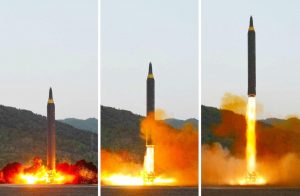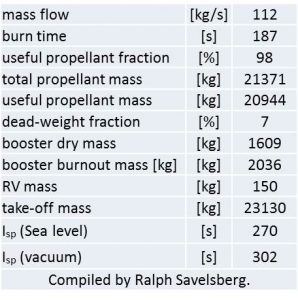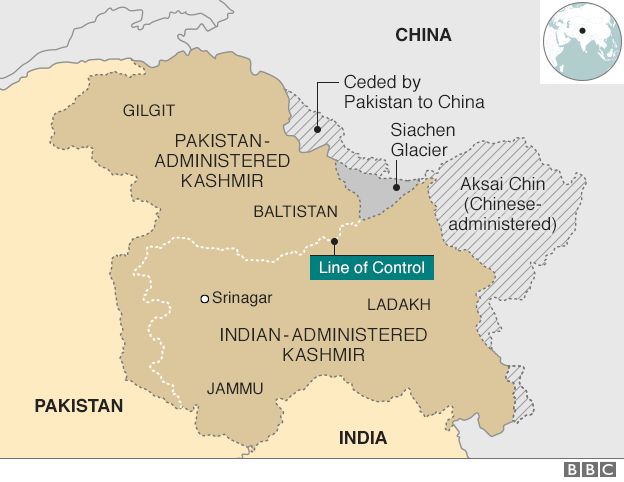(268) 04-29-2017-to-05-05-2017_____****THE****WINDS****of****WAR****
http://www.timebomb2000.com/vb/show...05-2017_____****THE****WINDS****of****WAR****
(269) 05-06-2017-to-05-12-2017_____****THE****WINDS****of****WAR****
http://www.timebomb2000.com/vb/show...12-2017_____****THE****WINDS****of****WAR****
(271) 05-13-2017-to-05-19-2017_____****THE****WINDS****of****WAR****
http://www.timebomb2000.com/vb/show...19-2017_____****THE****WINDS****of****WAR****
----------
For links see article source.....
Posted for fair use.....
http://www.msn.com/en-us/news/world...te-isis/ar-BBBjr0Y?li=BBmkt5R&ocid=spartanntp
Mattis says Trump's orders will annihilate ISIS
USA TODAY
Tom Vanden Brook
3 hrs ago
WASHINGTON —*New approaches approved by President Trump to defeat Islamic State militants have begun to bear fruit, Defense Secretary Jim Mattis told reporters Friday.*
Commanders in the field have been given greater authority to press the fight without approval from Washington, and a tactical shift to "annihilation" from a war of attrition has thrown*fighters from the Islamic State, or ISIS, on "their back foot," Mattis said.
"We're there to drive ISIS to its knees," Mattis said.
A military analyst, however, cautioned that the threat from extremists won't end even if ISIS is destroyed, and that good governments are key to stability in the region.
Mattis, along with Marine Gen. Joseph Dunford, chairman of the Joint Chiefs of Staff, and Brett McGurk, the presidential envoy to the coalition fighting ISIS, gave a generally*upbeat assessment of the fight that began in 2014. That's when a U.S.-led coalition, mostly using warplanes, began pounding ISIS fighters who had gobbled up large chunks of Iraq and Syria in a largely uncontested fight. There are now thousands of U.S. troops on the ground in Iraq and Syria, mostly as advisers.
Trump's order, Mattis said, has shifted the focus from surrounding ISIS fighters in their strongholds and waiting them out to attacking them and choking off their lines of retreat. Mattis described foreign fighters who have descended on the region, and threaten to return to their homes in places like Detroit and Paris, as a strategic threat.*He noted that ISIS terrorists have been fought by dozens of countries from Southeast Asia to Africa.
Mattis declined to put a timeline on defeat for the terror organization, calling it a "transnational, long-term threat." Trump, during his campaign, vowed to develop a plan once in office to "soundly and quickly" defeat ISIS.
U.S. troops have been advising local forces in what Mattis called an "annihilation campaign" against foreign fighters.*
At its peak, the flow of militants from other countries into Iraq and Syria was 1,500 fighters per month. Dunford now estimates that fewer than 100 terrorists trickle in each month.*
The other approach has given commanders authority, for example, to put U.S. combat advisers closer to the fight. Those troops can now partner with local troops, including Iraqi forces seeking to liberate Mosul, at the battalion level, or about 700 soldiers. Previously, U.S. troops had been advising brigades, which can have thousands of soldiers.
Michael O'Hanlon, a senior fellow at the Brookings Institution, cautioned that focusing too narrowly on destroying ISIS can mean ignoring other extremist groups like al-Qaeda offshoots entrenched in other parts of *Syria.*
"Absent a more comprehensive plan for how to stabilize Syria, that threat isn’t on the verge of annihilation and in fact may not even be diminishing," O'Hanlon said. "And in Iraq, while the overall situation is better, the absence of any clear plan for how to stabilize, govern and rebuild Mosul after its liberation makes me worry about the possibility of renewed sectarian strife down the road."
Mattis also briefly addressed the war in Afghanistan and North Korea's continued defiance of sanctions in testing missiles. Mattis*has yet to recommend to Trump*increasing U.S. troop strength in Afghanistan from the current level of 8,400. The commander there, Army Gen. John Nicholson, is seeking a few thousand more to help local forces beat back Taliban insurgents.
North Korea recently tested another missile, raising concerns that it is learning the lessons it needs to develop a nuclear weapon capable of reaching the United States. For now, the best approach to deter*North Korea is to rely on diplomatic pressure with the Chinese government; attacking North Korea militarily would result in casualties that would be "tragic on an unbelievable scale," Mattis said.
Also late Friday, the Pentagon announced that Dunford had been nominated by Trump for another two-year term as chairman. His nomination is subject to Senate confirmation. Dunford's first nomination was made by then-President Obama. By custom, the chairman serves two terms.
http://www.timebomb2000.com/vb/show...05-2017_____****THE****WINDS****of****WAR****
(269) 05-06-2017-to-05-12-2017_____****THE****WINDS****of****WAR****
http://www.timebomb2000.com/vb/show...12-2017_____****THE****WINDS****of****WAR****
(271) 05-13-2017-to-05-19-2017_____****THE****WINDS****of****WAR****
http://www.timebomb2000.com/vb/show...19-2017_____****THE****WINDS****of****WAR****
----------
For links see article source.....
Posted for fair use.....
http://www.msn.com/en-us/news/world...te-isis/ar-BBBjr0Y?li=BBmkt5R&ocid=spartanntp
Mattis says Trump's orders will annihilate ISIS
USA TODAY
Tom Vanden Brook
3 hrs ago
WASHINGTON —*New approaches approved by President Trump to defeat Islamic State militants have begun to bear fruit, Defense Secretary Jim Mattis told reporters Friday.*
Commanders in the field have been given greater authority to press the fight without approval from Washington, and a tactical shift to "annihilation" from a war of attrition has thrown*fighters from the Islamic State, or ISIS, on "their back foot," Mattis said.
"We're there to drive ISIS to its knees," Mattis said.
A military analyst, however, cautioned that the threat from extremists won't end even if ISIS is destroyed, and that good governments are key to stability in the region.
Mattis, along with Marine Gen. Joseph Dunford, chairman of the Joint Chiefs of Staff, and Brett McGurk, the presidential envoy to the coalition fighting ISIS, gave a generally*upbeat assessment of the fight that began in 2014. That's when a U.S.-led coalition, mostly using warplanes, began pounding ISIS fighters who had gobbled up large chunks of Iraq and Syria in a largely uncontested fight. There are now thousands of U.S. troops on the ground in Iraq and Syria, mostly as advisers.
Trump's order, Mattis said, has shifted the focus from surrounding ISIS fighters in their strongholds and waiting them out to attacking them and choking off their lines of retreat. Mattis described foreign fighters who have descended on the region, and threaten to return to their homes in places like Detroit and Paris, as a strategic threat.*He noted that ISIS terrorists have been fought by dozens of countries from Southeast Asia to Africa.
Mattis declined to put a timeline on defeat for the terror organization, calling it a "transnational, long-term threat." Trump, during his campaign, vowed to develop a plan once in office to "soundly and quickly" defeat ISIS.
U.S. troops have been advising local forces in what Mattis called an "annihilation campaign" against foreign fighters.*
At its peak, the flow of militants from other countries into Iraq and Syria was 1,500 fighters per month. Dunford now estimates that fewer than 100 terrorists trickle in each month.*
The other approach has given commanders authority, for example, to put U.S. combat advisers closer to the fight. Those troops can now partner with local troops, including Iraqi forces seeking to liberate Mosul, at the battalion level, or about 700 soldiers. Previously, U.S. troops had been advising brigades, which can have thousands of soldiers.
Michael O'Hanlon, a senior fellow at the Brookings Institution, cautioned that focusing too narrowly on destroying ISIS can mean ignoring other extremist groups like al-Qaeda offshoots entrenched in other parts of *Syria.*
"Absent a more comprehensive plan for how to stabilize Syria, that threat isn’t on the verge of annihilation and in fact may not even be diminishing," O'Hanlon said. "And in Iraq, while the overall situation is better, the absence of any clear plan for how to stabilize, govern and rebuild Mosul after its liberation makes me worry about the possibility of renewed sectarian strife down the road."
Mattis also briefly addressed the war in Afghanistan and North Korea's continued defiance of sanctions in testing missiles. Mattis*has yet to recommend to Trump*increasing U.S. troop strength in Afghanistan from the current level of 8,400. The commander there, Army Gen. John Nicholson, is seeking a few thousand more to help local forces beat back Taliban insurgents.
North Korea recently tested another missile, raising concerns that it is learning the lessons it needs to develop a nuclear weapon capable of reaching the United States. For now, the best approach to deter*North Korea is to rely on diplomatic pressure with the Chinese government; attacking North Korea militarily would result in casualties that would be "tragic on an unbelievable scale," Mattis said.
Also late Friday, the Pentagon announced that Dunford had been nominated by Trump for another two-year term as chairman. His nomination is subject to Senate confirmation. Dunford's first nomination was made by then-President Obama. By custom, the chairman serves two terms.









